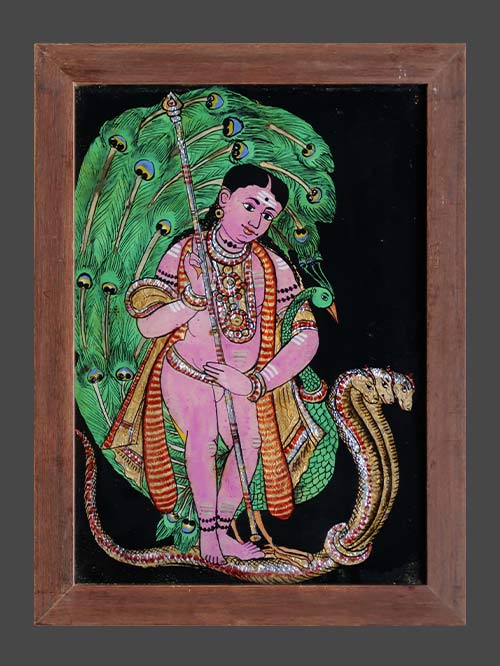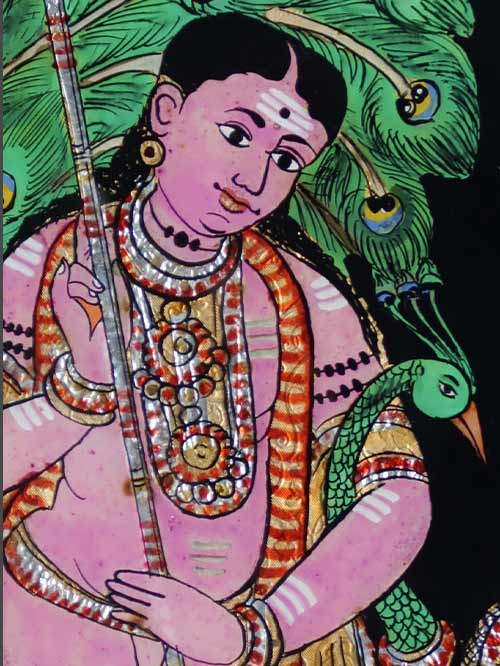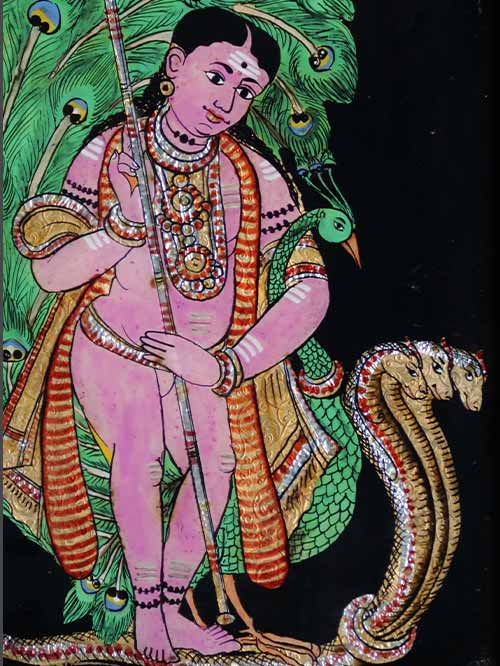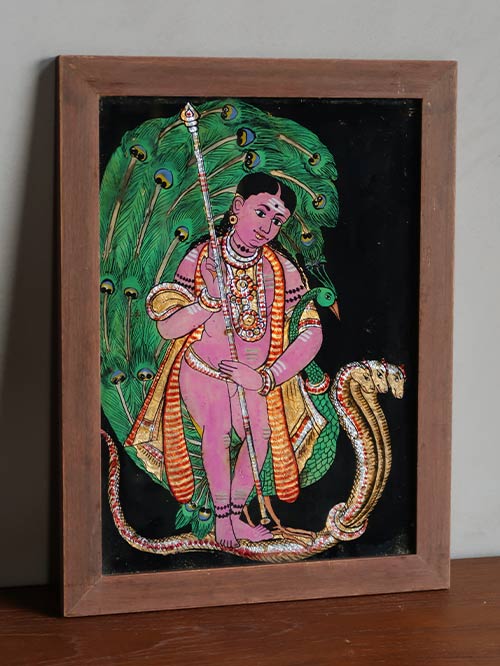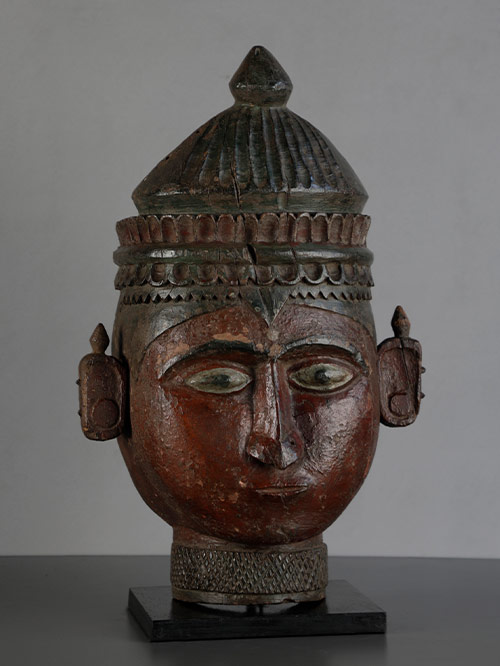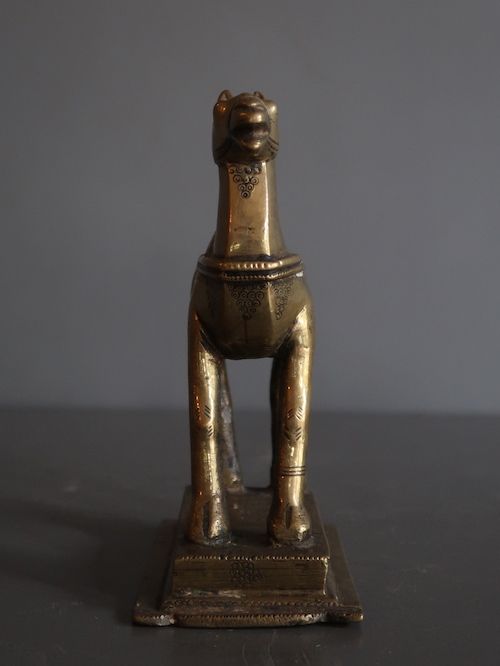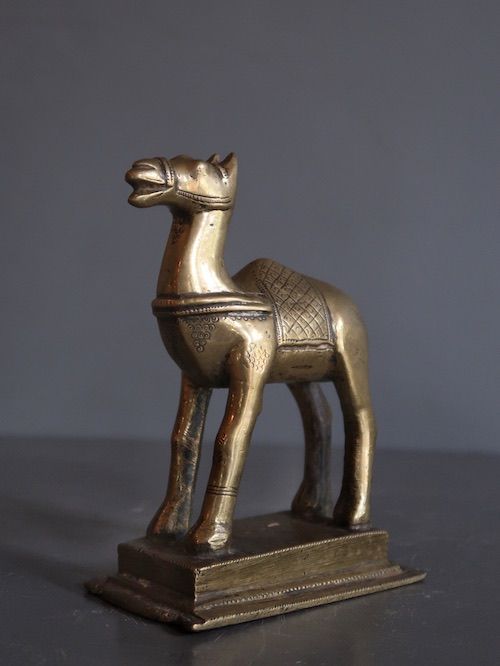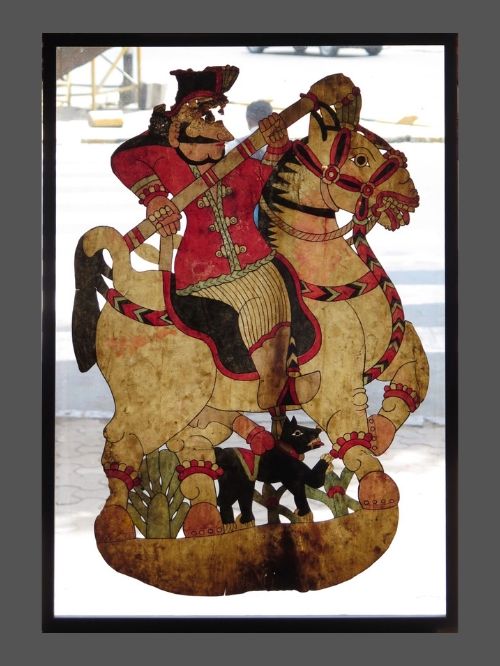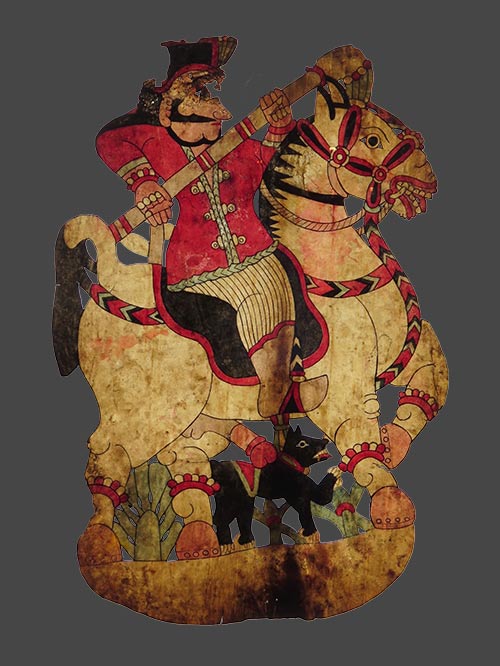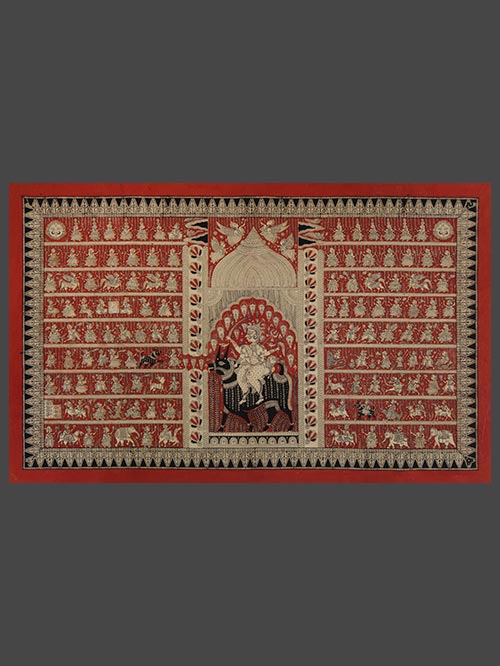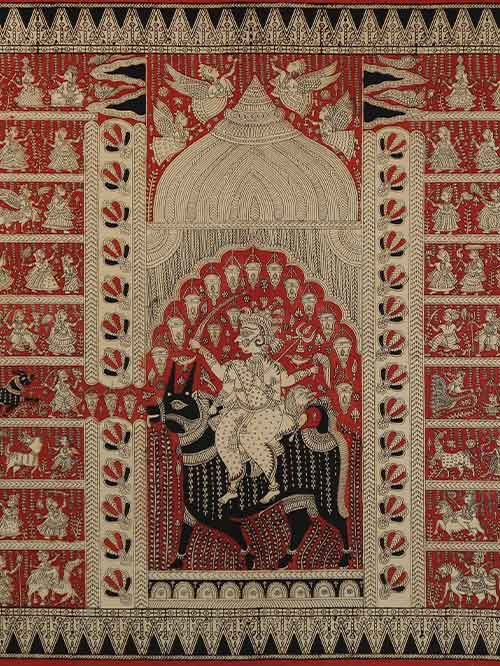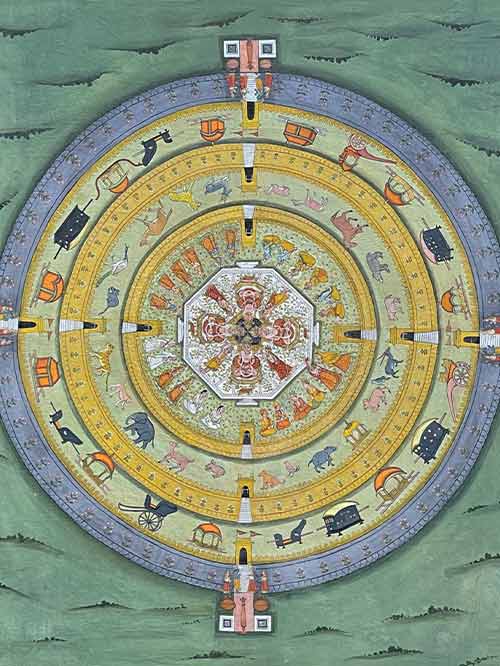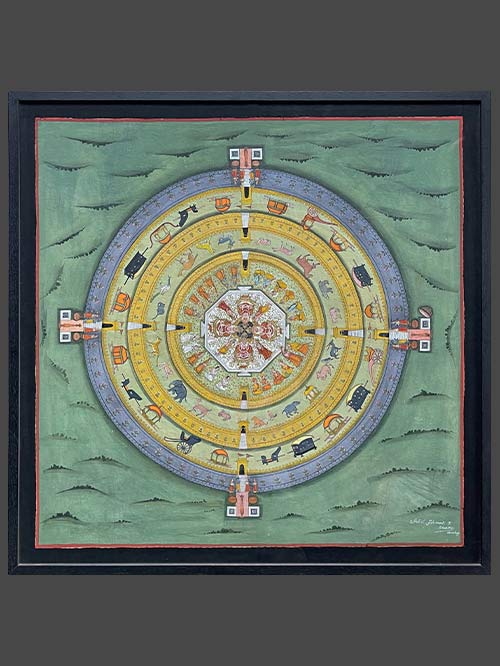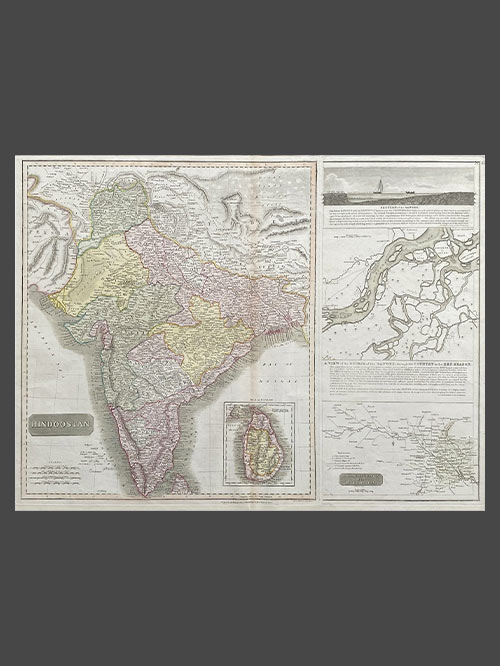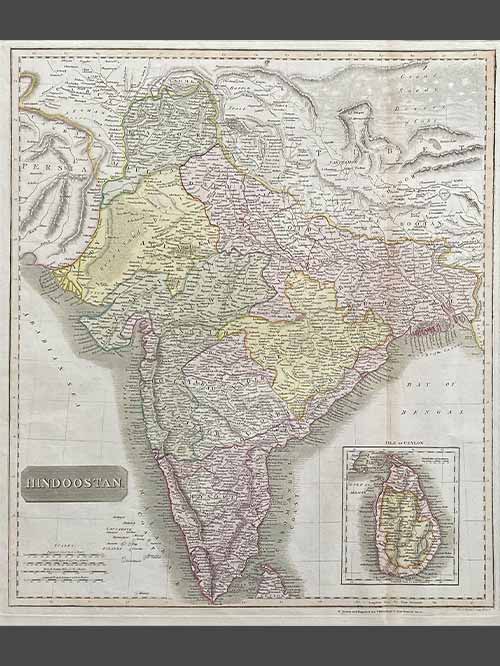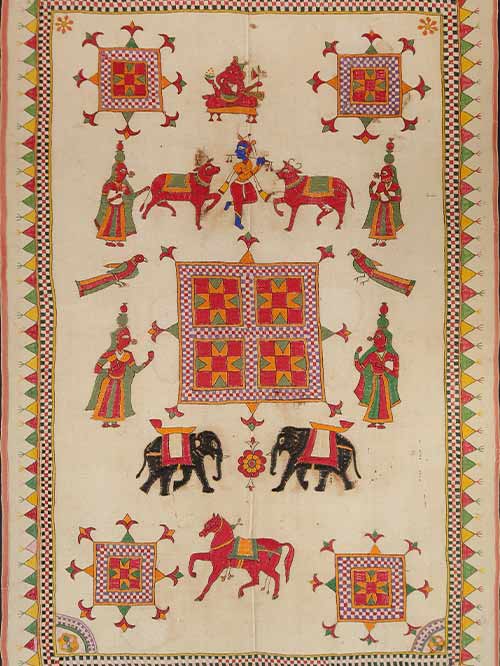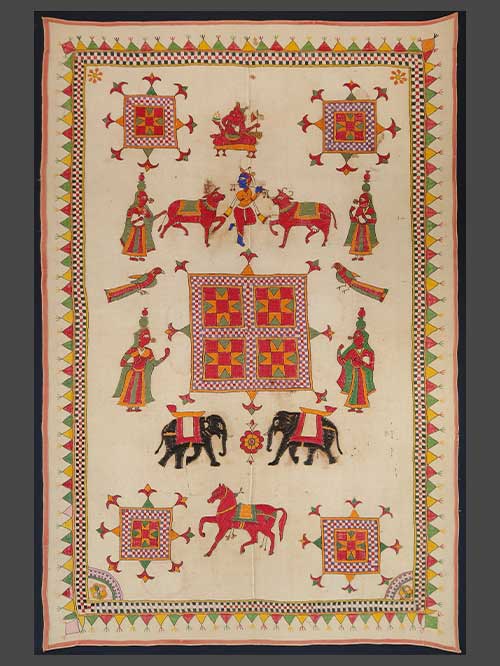Tanjore (South India)
reverse painting on glass
Subrahmanyam (also known as Kartikeya, Murugan or Skanda) stands with his arm around his conveyance, a majestic peacock with its spotted train of feathers on full display. The adolescent Subrahmanyam is naked but for his sumptuous jewellery and a saffron and yellow sash. A three headed golden cobra is held firmly in place by the young God and his peacock vahana.
Reverse glass paintings were introduced into India the late 18th century from China by way of the China Trade. Indian artists adopted the technique of reverse glass painting partly on account of its novelty and also because it was a relatively inexpensive medium which could produce rich effects. The technique proved extremely popular and soon spread through western and southern India and even to former provincial Mughal capitals of Oudh, Murshidabad. In Tanjore a distinctive school of glass painting developed, with a rich colour and bold and defiant style. The subjects were clearly presented with a certain opulence and glamour.
Framed Size (cms): 40.5(H) x 30.5(W)
Framed Size (inches): 16(H) x 12(W)
Painting Size (cms): 34.5(H) x 24(W)
Painting Size (inches): 13.5(H) x 9.5(W)

